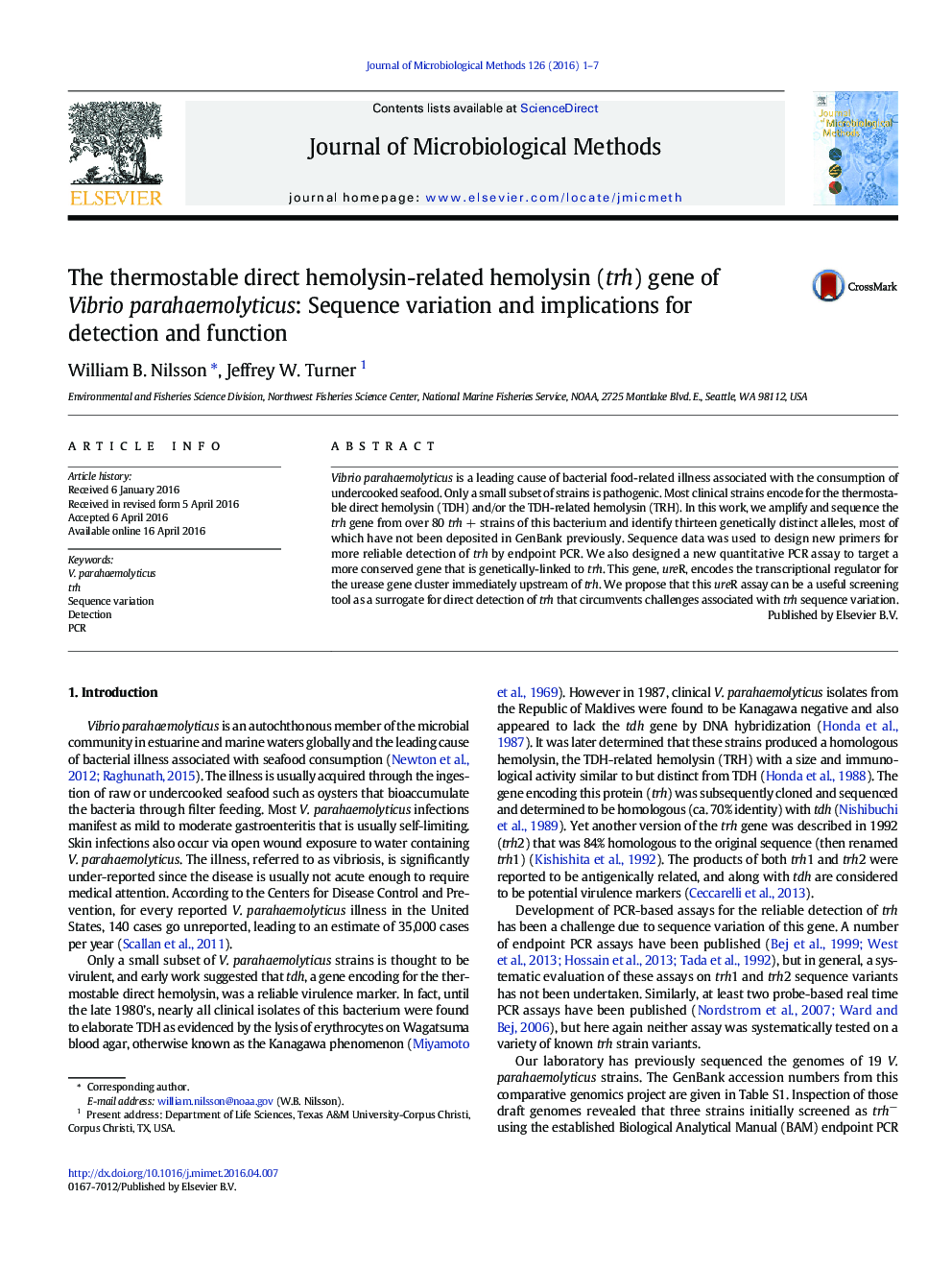| کد مقاله | کد نشریه | سال انتشار | مقاله انگلیسی | نسخه تمام متن |
|---|---|---|---|---|
| 2089691 | 1545917 | 2016 | 7 صفحه PDF | دانلود رایگان |

• The trh sequence of 80 + strains was determined; 13 unique alleles were identified.
• From the consensus sequence a more robust and reliable endpoint assay is described.
• Sequence variation may preclude design of a reliable QPCR assay to detect trh.
• The ureR gene lies adjacent to and appears to be genetically-linked to trh.
• A QPCR assay targeting ureR gene is described for indirect detection of trh.
Vibrio parahaemolyticus is a leading cause of bacterial food-related illness associated with the consumption of undercooked seafood. Only a small subset of strains is pathogenic. Most clinical strains encode for the thermostable direct hemolysin (TDH) and/or the TDH-related hemolysin (TRH). In this work, we amplify and sequence the trh gene from over 80 trh + strains of this bacterium and identify thirteen genetically distinct alleles, most of which have not been deposited in GenBank previously. Sequence data was used to design new primers for more reliable detection of trh by endpoint PCR. We also designed a new quantitative PCR assay to target a more conserved gene that is genetically-linked to trh. This gene, ureR, encodes the transcriptional regulator for the urease gene cluster immediately upstream of trh. We propose that this ureR assay can be a useful screening tool as a surrogate for direct detection of trh that circumvents challenges associated with trh sequence variation.
Journal: Journal of Microbiological Methods - Volume 126, July 2016, Pages 1–7